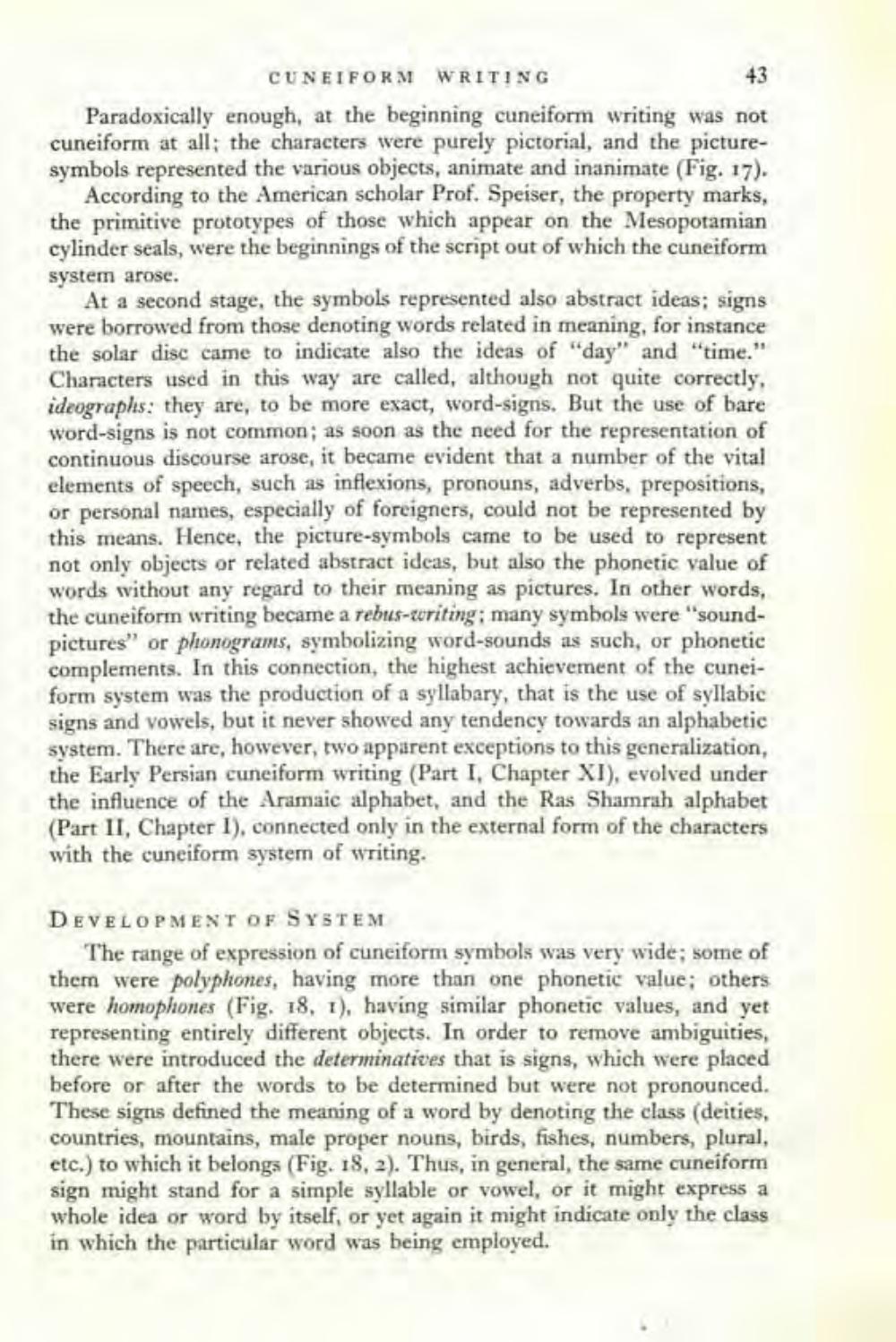________________
CUNEIFORM WRITING Paradoxically enough, at the beginning cuneiform writing was not cuneiform at all; the characters were purely pictorial, and the picturesymbols represented the various objects, animate and inanimate (Fig. 17).
According to the American scholar Prof. Speiser, the property marks, the primitive prototypes of those which appear on the Mesopotamian cylinder seals, were the beginnings of the script out of which the cuneiform system arose.
At a second stage, the symbols represented also abstract ideas; signs were borrowed from those denoting words related in meaning, for instance the solar disc came to indicate also the ideas of "day" and "time." Characters used in this way are called, although not quite correctly, ideographs: they are, to be more exact, word-signs. But the use of bare word-signs is not common; as soon as the need for the representation of continuous discourse arose, it became evident that a number of the vital elements of speech, such as inflexions, pronouns, adverbs, prepositions, or personal names, especially of foreigners, could not be represented by this means. Hence, the picture-symbols came to be used to rep not only objects or related abstract ideas, but also the phonetic value of words without any regard to their meaning as pictures. In other words, the cuneiform writing became a rebus-writing; many symbols were "soundpictures" or phonograms, symbolizing word-sounds as such, or phonetic complements. In this connection, the highest achievement of the cuneiform system was the production of a syllabary, that is the use of sy signs and vowels, but it never showed any tendency towards an alphabetic system. There are, however, two apparent exceptions to this generalization, the Early Persian cuneiform writing (Part 1, Chapter XI), evolved under the influence of the Aramaic alphabet, and the Ras Shamrah alphabet (Part II, Chapter 1), connected only in the external form of the characters with the cuneiform system of writing.
DEVELOPMENT OF SYSTEM
The range of expression of cuneiform symbols was very wide; some of them were polyphones, having more than one phonetic value; others were homophones (Fig. 18, 1), having similar phonetic values, and yet representing entirely different objects. In order to remove ambiguities, there were introduced the determinatives that is signs, which were placed before or after the words to be determined but were not pronounced. These signs defined the meaning of a word by denoting the class (deities, countries, mountains, male proper nouns, birds, fishes, numbers, plural, etc.) to which it belongs (Fig. 18, 2). Thus, in general, the same cuneiform sign might stand for a simple syllable or vowel, or it might express a whole idea or word by itself, or yet again it might indicate only the class in which the particular word was being employed.




